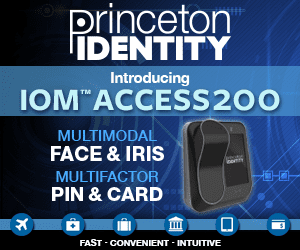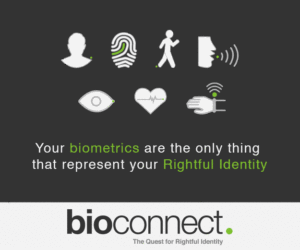Biometrics can protect the front door of your business, but that’s not all they can bring to an enterprise looking for top notch security. The workplace of today is subject to the rapid evolution of technology, and biometrics are the best way to ensure every vulnerability in the modern office is safe in a high risk landscape where old security could lead to the next big data breach.
Today, for Physical Access & Enterprise Month at FindBiometrics, we are going to examine three ways biometrics are protecting businesses beyond the front door.
The Server Room
 The popular conception of high profile data breaches involves remote hackers exploiting software from halfway around the world, but the security that could prevent a company from becoming the next Yahoo! can be deployed within its own buildings. In a blog post citing data from a Gemalto study on the matter, BioConnect’s James Shannon wrote, “any data center operator will tell you that the greatest risk they face is a security breach from within.”
The popular conception of high profile data breaches involves remote hackers exploiting software from halfway around the world, but the security that could prevent a company from becoming the next Yahoo! can be deployed within its own buildings. In a blog post citing data from a Gemalto study on the matter, BioConnect’s James Shannon wrote, “any data center operator will tell you that the greatest risk they face is a security breach from within.”
Further more, he writes: “a sizable portion of security breaches are accidental. In fact, 9% to 18% of total data breaches are attributed to accidental unauthorized access. This costs the data center industry around $400 billion annually.”
Server rooms and server cabinets can both be secured by currently available biometric technology, like BioConnect’s own CabinetShield solution. Unlike PINs and non-biometric cards, your biometrics can’t be stolen, and with today’s liveness detection algorithms and multi-factor solutions, presentation attacks are less of a threat than ever before. What’s more, biometrics also offer an irrefutable access record, creating a high risk scenario for any potential insider threat. If data is leaked from within, reports of whose fingerprint or face granted access to the compromised server can quickly illuminate who was in the room when the breach occurred.
The Dress Code
 The Internet of Things is gaining consumer traction and therefore entering the workplace. When it comes to IoT, a major vector of enterprise vulnerability is the wearable device. Whether it’s the exec using a luxury smartwatch or an engineer using smart glasses to enable Augmented Reality on the job, connected accessories are at use in the enterprise, and it’s increasingly important that these devices are secured. But they aren’t.
The Internet of Things is gaining consumer traction and therefore entering the workplace. When it comes to IoT, a major vector of enterprise vulnerability is the wearable device. Whether it’s the exec using a luxury smartwatch or an engineer using smart glasses to enable Augmented Reality on the job, connected accessories are at use in the enterprise, and it’s increasingly important that these devices are secured. But they aren’t.
In a 2016 survey of IT professionals conducted at that year’s RSA conference 69 percent of respondents who wore wearables in the workplace admitted to not using login credentials to secure their smart clothing. And it’s not like they had much of a choice. The average smartwatch still doesn’t have biometric authentication capabilities, and the inconvenience of having to enter a pass-code on a silver dollar-sized screen defeats the purpose of even having network access on your wrist in the first place.
Thankfully, the technology is already catching up. While biometric login hasn’t yet come to the consumer smartwatches from Samsung and Apple, patents suggest future iterations could be biometrically secured using anything from contactless authentication to vein-pattern recognition. Even better, new devices, like Toshiba’s AR glasses for industrial applications have built in fingerprint sensors already.
The Punch Clock
 Data theft is one thing, but biometrics are also the best way to protect against time theft. While that might sound like a pulpy science fiction concept on the surface, it’s really quite simple: if a business wants accurate payroll and attendance, biometrics are the only way to truly ensure staff are receiving cheques for the time worked and not being paid for fraudulently claimed work hours. No buddy punching, no revised sign-in times on the communal attendance spreadsheet, just biometric accuracy, pure and simple.
Data theft is one thing, but biometrics are also the best way to protect against time theft. While that might sound like a pulpy science fiction concept on the surface, it’s really quite simple: if a business wants accurate payroll and attendance, biometrics are the only way to truly ensure staff are receiving cheques for the time worked and not being paid for fraudulently claimed work hours. No buddy punching, no revised sign-in times on the communal attendance spreadsheet, just biometric accuracy, pure and simple.
Sometimes the stakes are even higher than improving payroll efficiency and strengthening the bottom line. Looking to the public sector, biometric time and attendance is being implemented by administrators at the Baltimore Police Department in order to crack down on overtime claim abuse in the wake of a scandal involving officers from BPD’s Gun Trace Task Force. Now, police officers will scan their own fingerprints at the beginning and end of shifts in a bit of biometric irony.
Capitalizing on the proliferation of consumer devices, some time and attendance vendors are even integrating smartphone grade biometrics into their punch clock solutions, with Replicon having enabled support for the iPhone X’s Face ID feature – which as of this writing is only available on the luxury smartphone model, but stands to become Apple’s primary biometric modality.
Indeed, biometric time and attendance is accessible and as easy to integrate as it is to use. When it comes to bringing a biometric upgrade to your workplace, the payroll can be a rewarding place to start.
*
Stay posted to FindBiometrics throughout April as we continue to bring you Physical Access & Enterprise Month featured content.
Physical Access & Enterprise Month is made possible by our sponsors: Princeton Identity and BioConnect.
—
April 13, 2018 – by Peter B. Counter








Follow Us